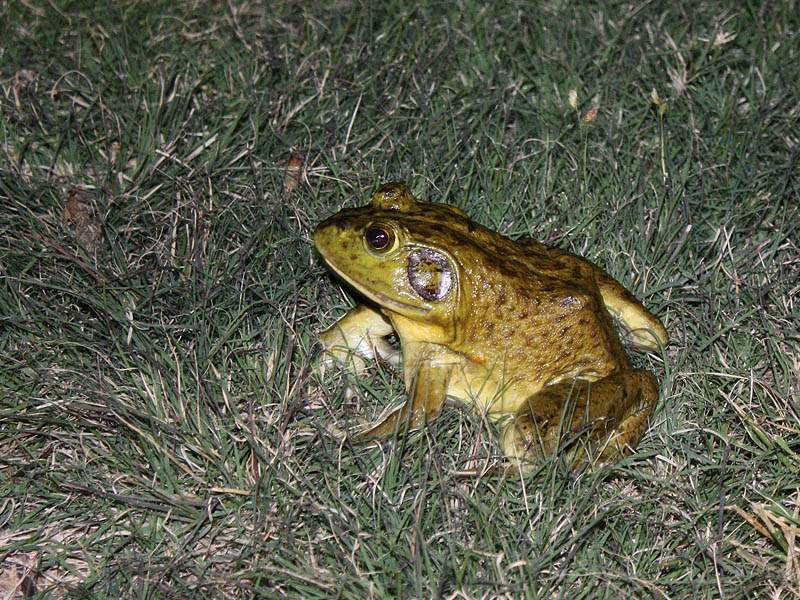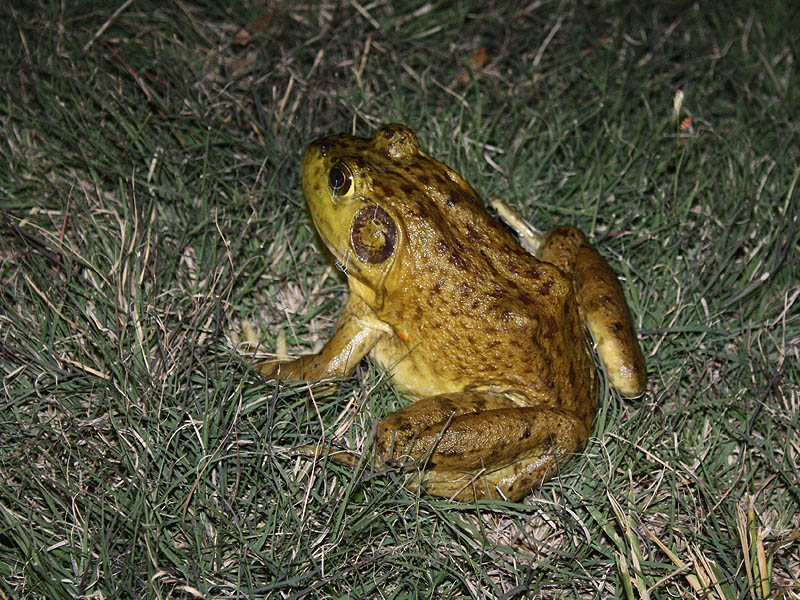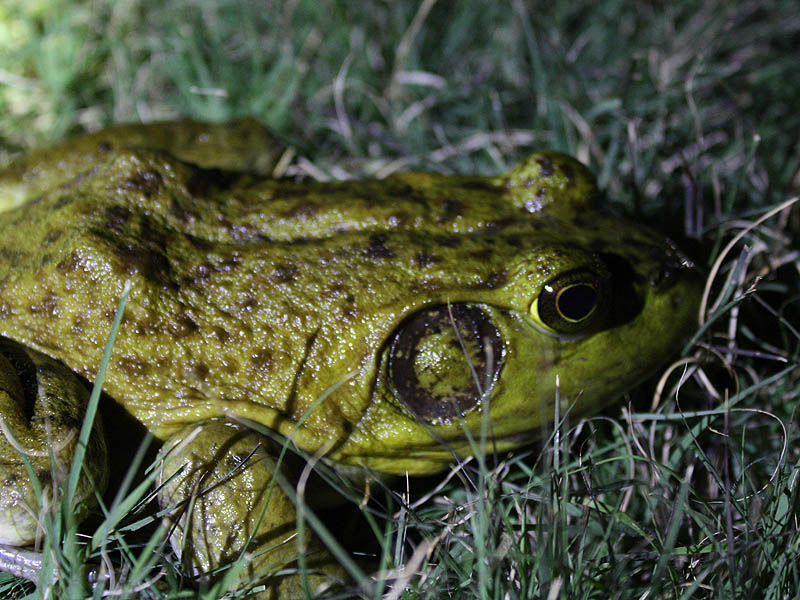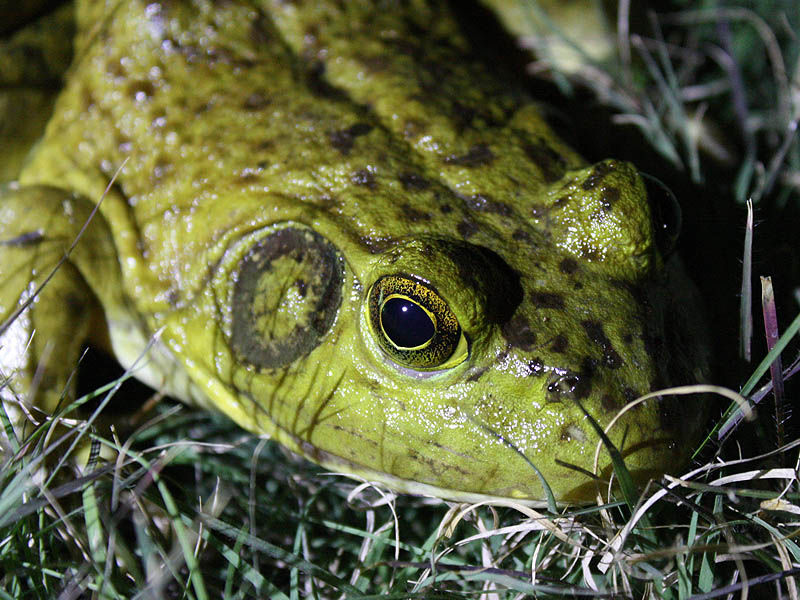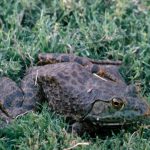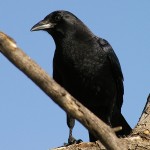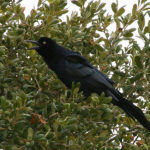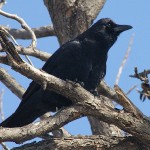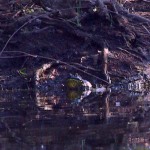The cool wet night brought this big male Bullfrog out of the water and onto the grass near Carrollton’s Blue Trail. Photographs courtesy of David Mimlitch.
Here is what Wikipedia has to say about the American Bullfrog:
The American bullfrog (Lithobates catesbeianus), often simply known as the bullfrog in Canada and the United States, is an aquatic frog, a member of the family Ranidae, or “true frogs”. This species has traditionally been classified as Rana catesbeiana, however the classification has been changed to Lithobates due to paraphyly in Ranidae. This frog has an olive green back and sides blotched with brownish markings and a whitish belly spotted with yellow or grey. The upper lip is often bright green and males have yellow throats. It inhabits large, permanent water bodies, such as swamps, ponds, and lakes, where it is usually found along the water’s edge. The male bullfrog defends a territory during the breeding season. His call is reminiscent of the roar of a bull, which gives the frog its common name. This frog is native to southern and eastern parts of the United States and Canada, but has been widely introduced across other parts of North, Central and South America, Western Europe, and parts of Asia.
The bullfrog is harvested for use as food in North America and in several countries into which it has been introduced. It is also cultured in controlled environments, though this is a difficult and not always successful undertaking. There is some international trade in frog legs for human consumption. Bullfrogs are used in biology classes in schools for dissection and are sometimes kept as pets, though this is not recommended.
